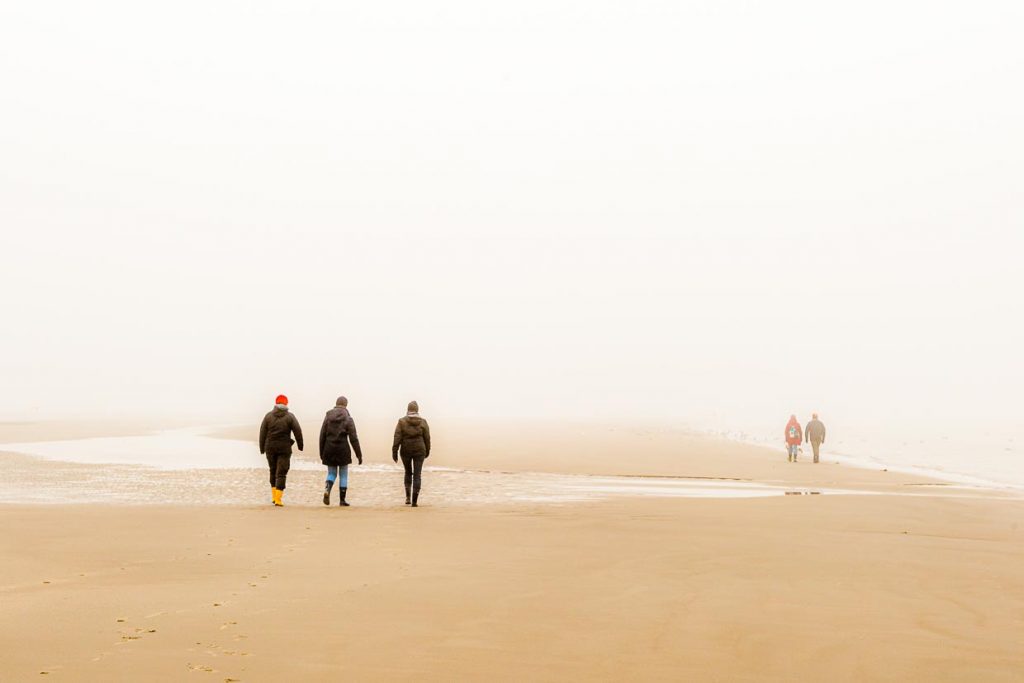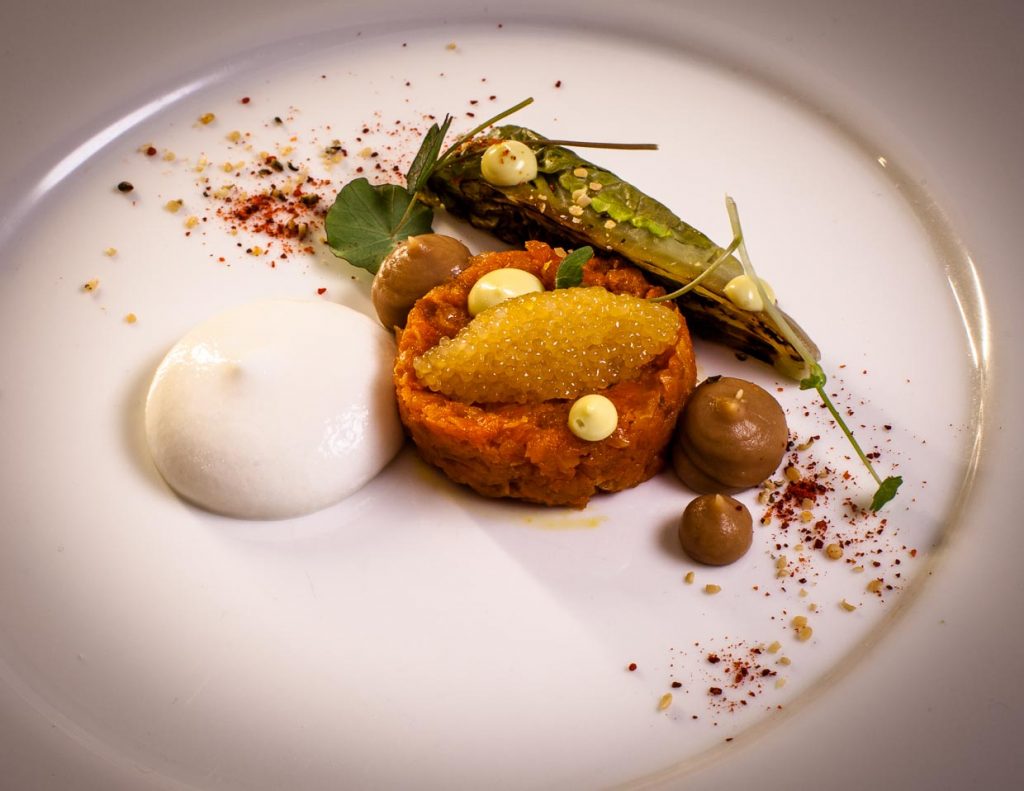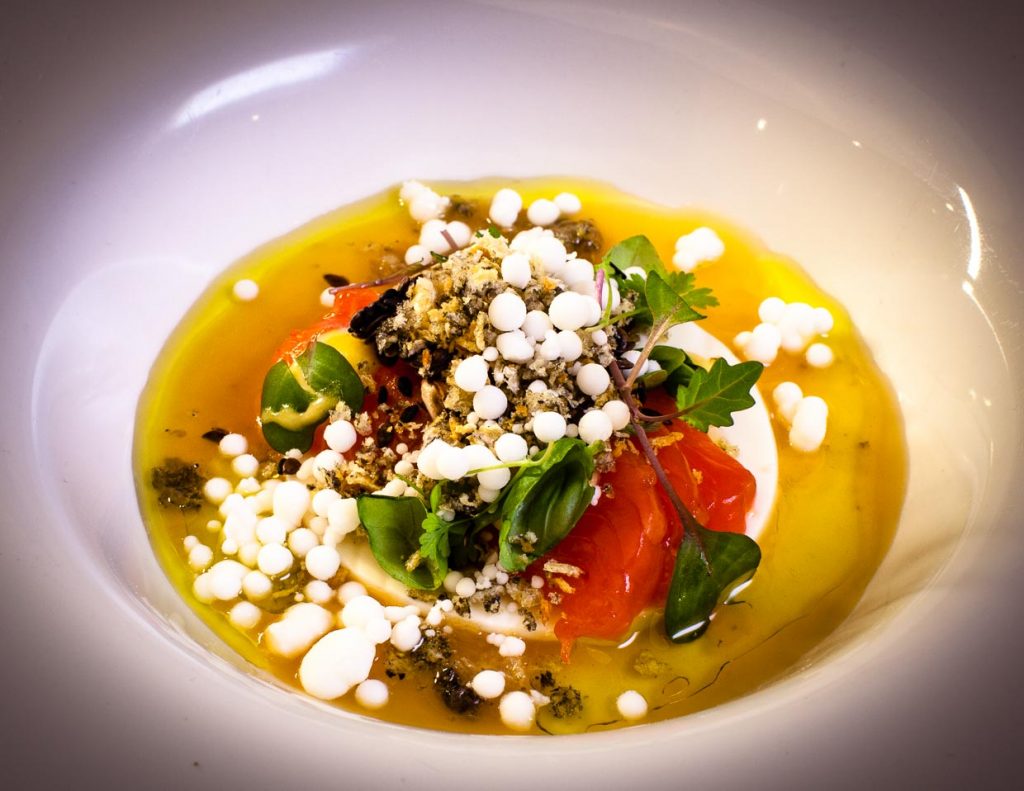Winter in the north undoubtedly has its charms, even if the weather outside is rough. The pile dwellings are typical for the wide beach of Sankt Peter-Ording and offer a good orientation to find your way back when the Wadden Sea is foggy. This is because the beach is so shallow that at high tide you can suddenly be surrounded by water.

Rubber boots are the most important piece of clothing to enjoy a mudflat hike anyway. The beach is 12 kilometers long and two kilometers wide. Even in winter, it invites you to hike, run or collect shells.

A gourmet festival enlivens the dark season
After so much fresh North Sea air, the menu prepared by Berlin star chef Marco Müller at the Ambassador Hotel promises supreme enjoyment. The hotel lies directly at a long wooden bridge, over which one can go also with high tide dry foot far out into the Wattenmeer.

In the kitchen, the most important preparations have been completed by guest chef Marco Müller from Berlin as part of the Schleswig-Holstein Gourmet Festival. Marco Müller has arrived with two chefs from his Berlin brigade and will be well supported by the team there at the Ambassador. Together with Karin Brockmeier, the hotel director and the chef of the house, André Siegmann the guests are soon welcomed and tuned to the five-course menu.

Marco Müller: Querdenker((The term Querdenker is used here in its original sense, as a creativity technique for finding solutions. Marco Müller is not to be associated with the protest groups against COVID measures, which have been using this term to describe themselves since 2020.)) and freshness fanatic
Marco Müller cooked a lot as a child, and a friend reminded him of this when he was about to choose a career: “It always tasted good with you.” Today’s Michelin-starred chef grew up in Potsdam-Babelsberg and began his cooking apprenticeship in the GDR two years before the fall of the Wall. “The vocational school was incredibly good,” he recalls, “but I didn’t like cooking the same thing all the time.” After the fall of the Berlin Wall, he saw his chance in West Berlin. Müller signed on with Johannes King at Schlosshotel Gehrhus, now the Relais & Chateaux Schlosshotel in Grunewald.
At that time, the top gastronomy still believed that the best goods could only be obtained from the Rungis market in Paris. Marco Müller was disturbed at the time “that everything was brought in from France, although there are huge areas in Brandenburg that can be used to produce the best food.” For Müller, the focus since then has been on the food, not the effects.

The lateral thinker((The term lateral thinker is used here in its original sense, as a creativity technique for finding solutions. Marco Müller should not be associated with the protest groups against COVID measures, which have been using this term to describe themselves since 2020)) has prevailed and Müller now works independently at Rutz in Berlin. As head chef, he took over the Rutz wine bar in 2004. Today, he is the kitchen director of Restaurant Rutz and Weinbar Rutz. In 2007, he received his first Michelin star, followed by his second in 2017. He works closely with more than 35 producers who provide him with fresh food of the quality he desires.
+++ update March 2020 +++ third Michelin star for Marco Müller +++
Festival menu for the Schleswig-Holstein Gourmet Festival

Right at the beginning of his menu at the Schleswig-Holstein Gourmet Festival, Müller makes it clear what regionally influenced cuisine can do for him. “The star of a dish doesn’t always have to be meat,” he says, explaining that the name carrot tartare refers to the meat-like bite of the main ingredient. The carrots have to stay in the ground for Marco Müller, even in winter. They are harvested only shortly before preparation. Pike caviar and the tart of grilled lettuce create a contrast of textures, which in turn are perfectly supported by the creamy flavor components of bean miso, lovage and mild sheep’s milk yogurt.
A cup of tomato tea prepares the palate

The guest chef surprises at the North Sea in North Friesland with a greeting from the Baltic Sea. At Rutz in Berlin, the next course is served with mackerel. Here in St. Peter-Ording, Marco Müller places the rare Baltic trout on an island of curdled hay milk, which once again appears on the dish in the form of cool pearls. The whole floats in tea, which has been additionally prepared with yellow tomatoes. Fried trout skin with seaweed and anchovy mayonnaise add subtle flavors, toasted seeds of sesame, linseed and sunflower a crunchy mouthfeel.
The first meat course uses a rare cut of pork. The tender thin flap of muscle under the chin is usually cut in half with the pig, and only those who know their butcher can have the animal cut differently. Finally, Marco Müller also attaches great importance to comprehensive quality in his meat suppliers. This starts with the feed, which is to be grown in-house, and does not end with the gentle slaughtering of animals, which continue to be fed for several months after their first growth spurt.

So let’s get to the dish, where under a thin kohlrabi lattice that drapes over more kohlrabi pieces like a cloth and the pig ‘s chin, which is even more tender than a pig’s cheek. Finally, Marco Müller not only uses the supposedly noble pieces of meat, but in this case he is able to bring out the finest nuances of flavor with a foam of juniper green.

Not all dishes Marco Müller can bring to the plate at festivals on the road with the same complexity as at Berlin’s Restaurant Rutz or Wine Bar Rutz. But in the kitchen of the Ambassador Hotel St. Peter-Ording, the three variations of black salsify can be freshly prepared from the root.

On top of a salsify sprinkled with coarse salt lies a slice of beef brisket, which is not only incredibly tender, but the special preparation method also brings out the flavor of a deliberately older cow slaughtered on pasture without stress. The finely chopped fresh sorrel, the nutty-tasting ragout of a freshly harvested sunflower root and, last but not least, the accompanying Catalan red wine GR-174 Casa Gran del Siurana with its fresh and floral aromas elevate this meat dish to the highlight of the menu at the Schleswig-Holstein Gourmet Festival.

The Big Green Egg can be heated to exactly any temperature with charcoal (in this case, even 450°C with charcoal briquettes), so the pieces of meat only have to linger in the grill, which is coated on the inside with a special ceramic, for a very short time.
When looking at the menu, the matter-of-fact tone with which Marco Müller describes his dishes could provoke guests, especially since unadorned terms such as skin could also be disturbing. But those who have accepted this challenge are more than compensated by both the taste experience and the presentation on the plate. The dessert is logically named simply: Champagne Flavors in Texture.

Over a base of macadamia nuts, a ring of white chocolate and pumpkin cream is filled with a whiskey-champagne concoction. The ring is generously topped with walnut ice cream, miso pumpkin, plum, quince, roasted malto yeast and chocolate.
The cost of half board was not charged by the hotel

